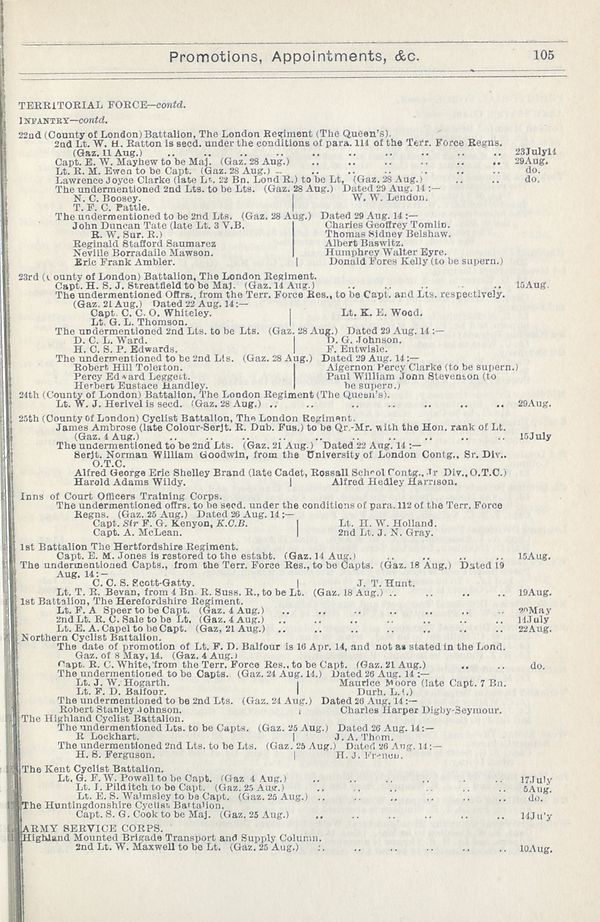John Duncan Tate FRIBA was born in 1880, the son of Frederick Tate and Alice Edith Duncan. He married Annie Stewart Holl, daughter of William Huet Holl of Assam and Retford, at St Margaret’s Church, Lee on 22 June 190 and they had one child, a daughter, Phyllis Tate.1
Tate became a well known architect specialising in residential homes and executing them in a late Arts & Crafts style show the influence of Lutyens. He was articled to James Edmeston and Edward Gabriel from 1898 to 1901, and then assistant to James Edwin Forbes in Birmingham. In 1902 he became assistant to C E MacPherson where he remained until 1905 when he established the partnership of Forbes and Tate in London with James Edwin Forbes. He was nominated LRIBA in 1910 and FRIBA in 1915.
He was commissioned into the 3rd Volunteer Battalion, the Queen’s (Royal West Surrey Regiment) on 9 March 1898 and was promoted Lieutenant. Having retired he returned to the Colours with the 22nd Bttn London Regiment during the First World War. He served with Thomas Belshaw and Thomas Pattle who were also a members of the Lodge (Army List shown below).

Given his profession, he was unsurprisingly transferred to the Royal Engineers before being promoted Lieutenant in 1917.
He died on 28 November 1930 at 16 St Andrews Mansions, Dorset Street, London
Selected architectural commissions:
- Pollard’s Wood House, Nightingale Lane, Chalfont St Giles 1906
- The Sheiling, Chalfont St Giles 1907 (built as his own house)
- The Pollards, Oval Way, Gerrards Cross
- Brown Cottage, Oval Way, Gerrards Cross
- Kimberley, Oval Way, Gerrards Cross
- Pollards Park, Chalfont St Giles for Archibald Grove MP 1907
- Pollards Wood Grange, Buckinghamshire ca. 1909
- Little Pednor, Chartridge, 1910-12 (enlarged)
- Brantfell, Gerrards Cross, ca. 1911
- House at 40 Parkway, Gidea Park, Romford, ca. 1911
- The Pillars, Northwood, London ca. 1911
- Widenham House, West Common, Gerrards Cross
- Paddock House, West Common, Gerrard’s Cross. ca 1913
- Baylins Farmhouse, Penn Road, Knotty Green 1919 (loggia addition)
- War Memorial Hall, Ballinger, Buckinghamshire 1922
- Barrington Court, Somerset 1921-25 (restoration)
- Beechams, Barrington Court, Somerset 1921-25
- House for J. Crook, Chalfont Road, Amersham 1928
- Phyllis Tate was expelled from primary school at the age of 10 for singing a lewd song and subsequently received no further formal schooling until she was coaxed by the composer Harry Farjeon into attending the Royal Academy of Music from 1928 to 1932, studying composition with Farjeon. She became a composer. Her work is still recorded and performed.